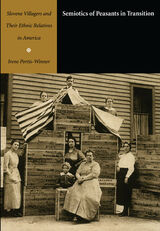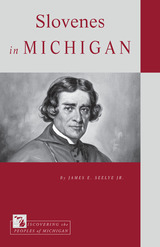3 books about Slovenian Americans

Death to Fascism
Louis Adamic's Fight for Democracy
John P. Enyeart
University of Illinois Press, 2019
Born to Slovenian peasants, Louis Adamic commanded crowds, met with FDR and Truman, and built a prolific career as an author and journalist. Behind the scenes, he played a leading role in a coalition of black intellectuals and writers, working class militants, ethnic activists, and others that worked for a multiethnic America and against fascism. John Enyeart restores Adamic's life to the narrative of American history. Dogged and energetic, Adamic championed causes that ranged from ethnic and racial equality to worker's rights to anticolonialism. Adamic defied the consensus that equated being American with Anglo-Protestant culture. Instead, he insisted newcomers and their ideas kept the American identity in a state of dynamism that pushed it from strength to strength. In time, Adamic's views put him at odds with an establishment dedicated to cold war aggression and white supremacy. He increasingly fought smear campaigns and the distortion of his views--both of which continued after his probable murder in 1951.
[more]

Semiotics of Peasants in Transition
Slovene Villagers and Their Ethnic Relatives in America
Irene Portis-Winner
Duke University Press, 2002
In Semiotics of Peasants in Transition Irene Portis-Winner examines the complexities of ethnic identity in a traditional Slovene village with unique ties to an American city. At once an investigation into a particular anthropological situation and a theoretical exploration of the semiotics of ethnic culture—in this case a culture permeated by transnational influences—Semiotics of Peasants in Transition describes the complex relationships that have existed between and among the villagers remaining in Slovenia and those who, throughout the nineteenth and twentieth centuries, emigrated to Cleveland, Ohio.
Describing a process of continuous and enduring interaction between these geographically separate communities, Portis-Winner explains how, for instance, financial assistance from the emigrants enabled their Slovenian hometown to survive the economic depressions of the 1890s and 1930s. She also analyzes the extent to which memories, rituals, myths, and traditional activities from Slovenia have sustained their Cleveland relatives. The result is a unique anthropological investigation into the signifying practices of a strongly cohesive—yet geographically split—ethnic group, as well as an illuminating application of semiotic analyses to communities and the complex problems they face.
Describing a process of continuous and enduring interaction between these geographically separate communities, Portis-Winner explains how, for instance, financial assistance from the emigrants enabled their Slovenian hometown to survive the economic depressions of the 1890s and 1930s. She also analyzes the extent to which memories, rituals, myths, and traditional activities from Slovenia have sustained their Cleveland relatives. The result is a unique anthropological investigation into the signifying practices of a strongly cohesive—yet geographically split—ethnic group, as well as an illuminating application of semiotic analyses to communities and the complex problems they face.
[more]

Slovenes in Michigan
James E. Seelye
Michigan State University Press, 2017
The Slovenes represent a small but important microcosm of Michigan history. Thousands followed the pioneering missionary Frederic Baraga and settled in the mining regions and forests of the Upper Peninsula before many of them scattered to the auto industry of the Lower Peninsula in the early twentieth century. Everywhere they traveled and settled, they left a detectable imprint that was clearly Slovene. The first Slovene in Michigan, Bishop Frederic Baraga, traveled extensively throughout the state. In his wake, families such as the Vertins and Ruppes followed, each playing an important role in their communities. In many regions of the state, the most recognizable names, buildings, and businesses bear their names and illustrate the long-lasting influences of Slovenes on the history of Michigan. To understand the history of Slovene immigration in the Great Lakes is to better understand Michigan history.
[more]
READERS
Browse our collection.
PUBLISHERS
See BiblioVault's publisher services.
STUDENT SERVICES
Files for college accessibility offices.
UChicago Accessibility Resources
home | accessibility | search | about | contact us
BiblioVault ® 2001 - 2024
The University of Chicago Press









